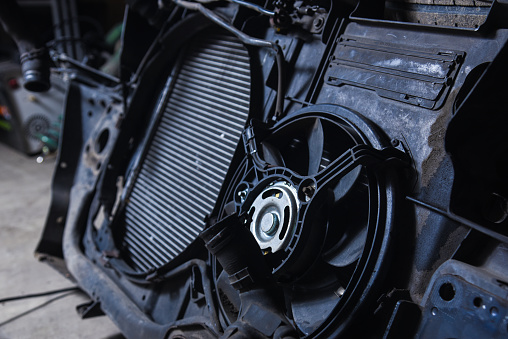How To Drain And Clean Car Engine Cooling System


HOW TO DRAIN THE CAR ENGINE COOLING SYSTEM


It is advisable to check the water-cooling system at least twice a year or every 6,000 miles, removing any dead insects or dirt blocking the airflow through the radiator fins and inspecting hoses for cracks, kinks, or perishing all signal weakness.
Most ant-freeze solutions are good for two years’ use, but before winter starts, the strength of the ant-freeze should be checked a garage can do this by measuring its specific gravity with a special hydrometer and fresh anti-freeze added if necessary.
When the time comes to change the anti-freeze any deposits in the cooling system should be flushed out after draining.
Draining the cooling system involves:
- Place the heater control to ‘hot’, or fully open the cylinder head water valve to prevent airlocks. If the anti-freeze is to be re-used, an old bowl will catch the coolant.
- Remove the radiator cap or plug slowly, using a large pad of folded cloth to protect your hands if the system is hot. Undo any air bleed valves (but do not remove them).
- Open the radiator drain plug or tap, if fitted, and the plug or tap on the cylinder block, the handbook will show its location. If there is no radiator plug or drain tap, disconnect the bottom hose to let the water out.
- If water trickles slowly from a tap or plug, it is probably blocked by sediment which can be dislodged by prodding with a piece of wire.

STEPS IN FLUSHING AND CLEANING THE CAR ENGINE COOLING SYSTEM

- Look through the radiator filler hole. If the tubes are covered with scale deposits, use a proprietary cleaning compound to loosen them, following the maker’s instructions.
- Flush the radiator by hosing water at main pressure through the filler hole. If the flow through the bottom hose stub is restricted, it will be necessary to back-flush the radiator. Push a garden hose into the bottom radiator stub (wrap it in the rag to prevent leakage). Turn on the tap and run it until the water runs out of the filler hole. In some cases, it may be necessary to remove the radiator, turn it upside down, and again back-flush it by hosing water in through the bottom hose stub. If this does not improve the flow of water and the engine persistently overheats, take it to a radiator specialist to de-scale it using a powerful alkaline solution.
- Clean the outside of the radiator with plenty of water and a soft-bristled brush to remove any debris blocking the airflow.
- To flush the heater, disconnect the two heater hoses at the engine. One will be clipped to the cylinder head or inlet manifold and the other will be attached near the water pump with the heater control on ‘hot’ or the cylinder head water valve open, fit the mains hose to the heater hose disconnected from the pump. Continue flushing until clear water emerges.
- The thermostat must come out in order to flush the cylinder block. In most cars, it is located under a housing at the cylinder head end of the top hose. Unbolt the housing, remove it, and scrape away the gasket around the edge of the thermostats. The thermostat should now lift out. It may be corroded firmly in place. If so, scraping debris from the edge of the thermostat using a small screwdriver will allow it to be lifted.
- Disconnect the bottom radiator hose at the water pump end. Insert the mains hose into the thermostat hole and turn on the water. There should be an unrestricted flow from the bottom hose stub. Flush until clear water emerges. Reassemble by reversing the sequence.

